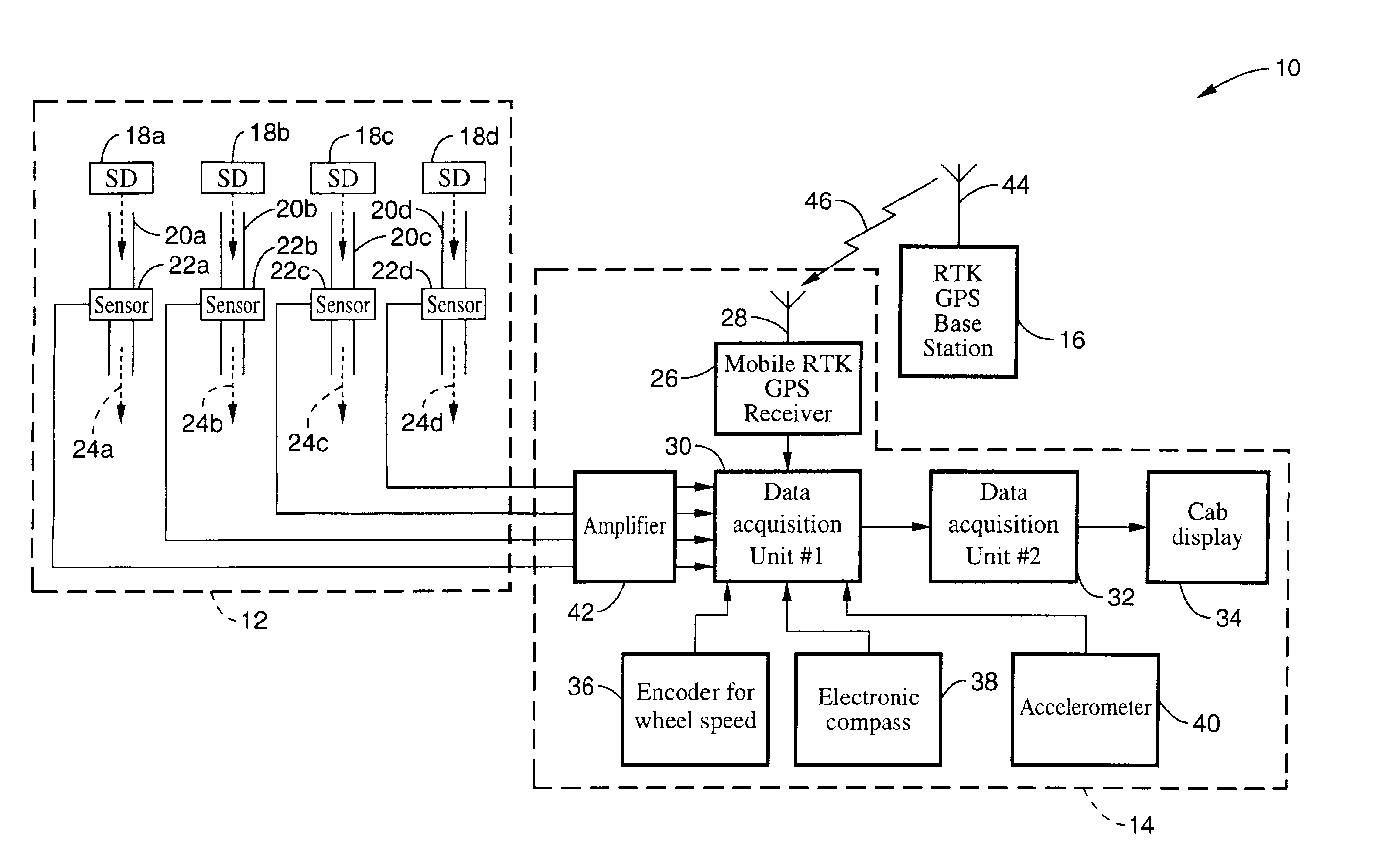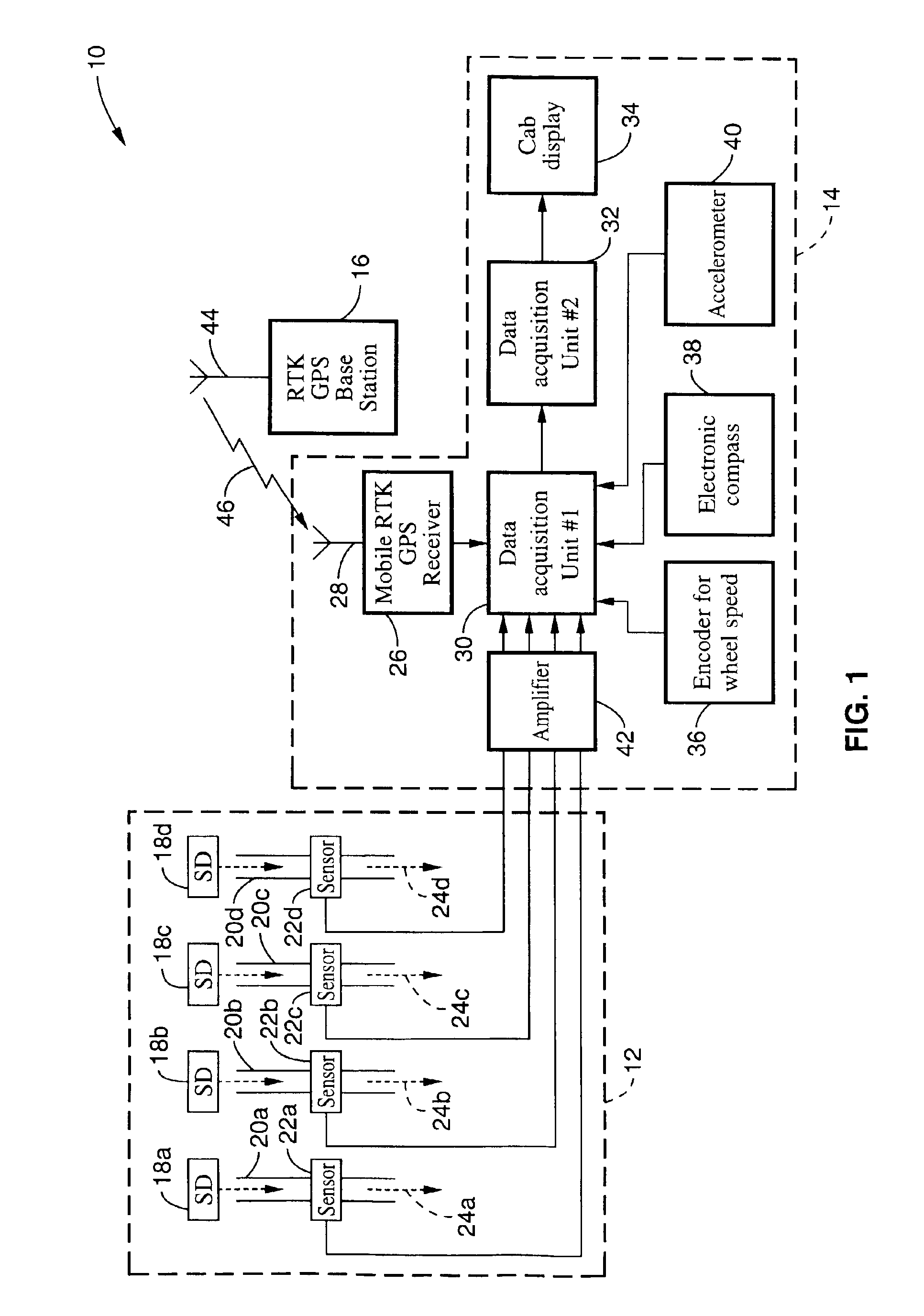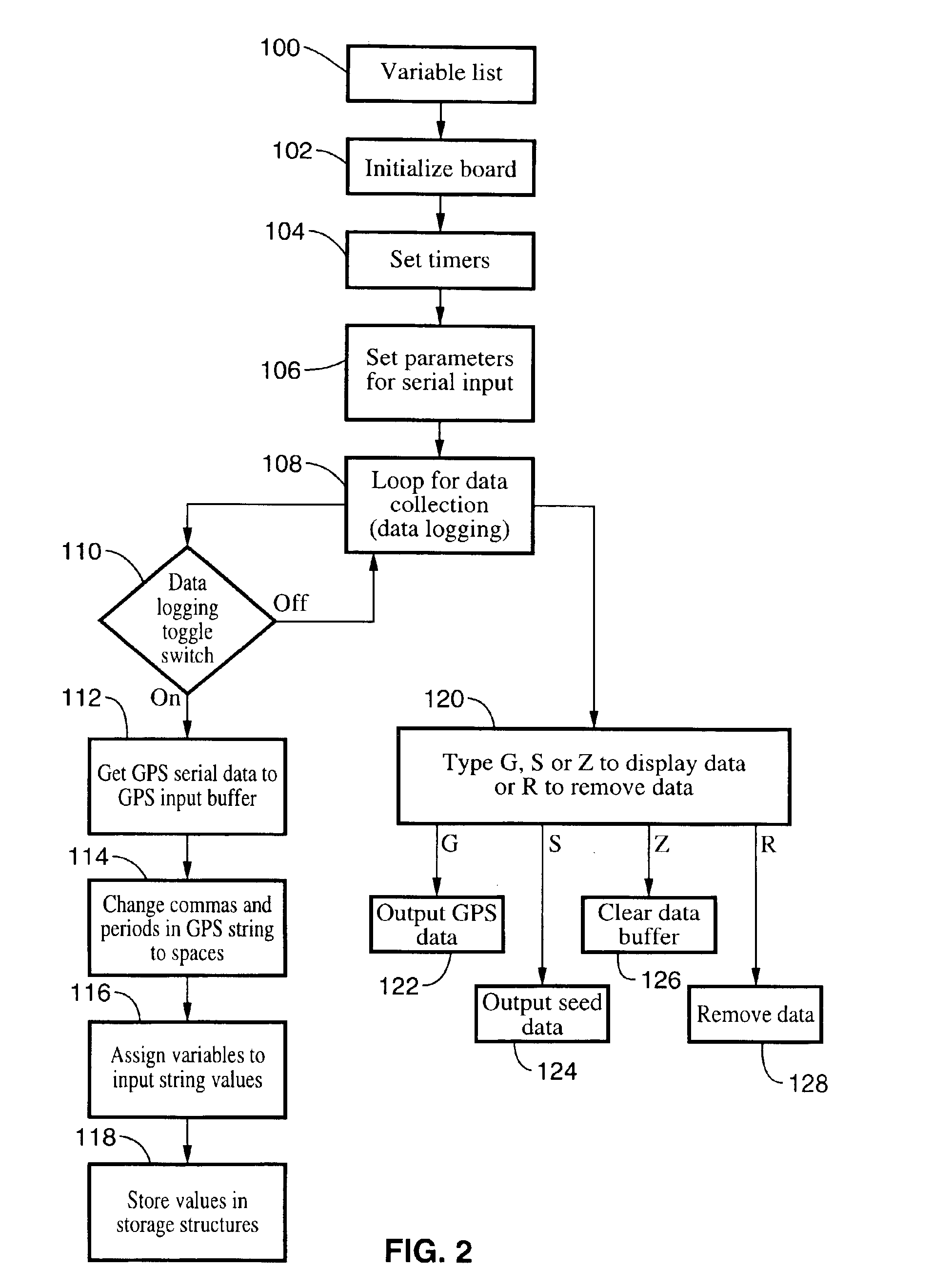Method and apparatus for ultra precise GPS-based mapping of seeds or vegetation during planting
a mapping and gps technology, applied in the field of precision farming methods, can solve the problems of system use of very low ground speed and limited success of precision techniques, and achieve the effects of reducing production costs, ensuring safety, and controlling seed application
- Summary
- Abstract
- Description
- Claims
- Application Information
AI Technical Summary
Benefits of technology
Problems solved by technology
Method used
Image
Examples
example 1
[0061]A four row Salvo 650 vacuum planter was retrofitted with a complete set of 4700 series centimeter accuracy surveying and mapping system comprising a base unit, a rover, radio link, and other accessories provided by Trimble Navigation Ltd. Two single board data loggers were used to acquire data in real-time and display it in the tractor cab. The first data logger was interfaced to the centimeter accuracy GPS unit, the optical sensors, an encoder, and an accelerometer. The second data logger was interfaced to a display unit mounted in the cab. The two data loggers and the GPS receiver were mounted in a rugged, weatherproof metal box and secured to the planter frame. The accelerometer and GPS antenna were installed on the top of the toolbar frame. The GPS antenna was directly ahead of planter unit #1. The accelerometer was included to monitor the planter dynamics since it was thought to be a critical issue in determining seed dynamics; however, the information was found not to be...
example 2
[0062]Preliminary tests indicated that all of the sensors and the GPS unit were working. Following the preliminary tests, field tests were conducted over two planting seasons to check the performance of the plant mapping system. In the first year, four rows were planted during each pass through a 165-ft. test plot. Corn seed (hybrid: Pioneer 3162 R24) was planted at a depth of two inches and an operating speed of 2 mph. In each row, 15-ft sections were marked consecutively. Three of the eleven 15-ft sections were selected at random for analysis. The sections were measured by the Trimble RTK surveying equipment. The distance between the plants was also measured with a tape measure in order to check the accuracy of the Trimble surveying equipment. A computer program was written to process the seed and GPS location data and estimate the exact coordinates of each seed and its distance from the adjacent seed. When we examined the RTK GPS position, we found that they did not all lie on a ...
example 3
[0063]We learned that RTK GPS quality was very important. As long as RTK GPS quality was “3” we were guaranteed centimeter accuracy. We developed an algorithm that utilized only quality “3” GPS signals and continuously performed instantaneous ground wheel calibration which could be used for prediction purposes if a quality “3” GPS signal was unavailable. The interpolation technique provides the antenna location in UTM coordinates. To obtain the exact location of the seeds it was necessary to implement an Eluerian rotation scheme.
[0064]This modified scheme was tested during the second year of this study. Some of the early plantings indicated that we were not receiving quality “3” signal most of the time. It turned out that the base station antenna was not high enough. In response, we constructed a tall tower (about 12-ft. tall) to mount the antenna near the base station. Elevating the antenna at the base station virtually eliminated problems with RTK GPS signal quality.
[0065]The sens...
PUM
 Login to View More
Login to View More Abstract
Description
Claims
Application Information
 Login to View More
Login to View More - R&D
- Intellectual Property
- Life Sciences
- Materials
- Tech Scout
- Unparalleled Data Quality
- Higher Quality Content
- 60% Fewer Hallucinations
Browse by: Latest US Patents, China's latest patents, Technical Efficacy Thesaurus, Application Domain, Technology Topic, Popular Technical Reports.
© 2025 PatSnap. All rights reserved.Legal|Privacy policy|Modern Slavery Act Transparency Statement|Sitemap|About US| Contact US: help@patsnap.com



